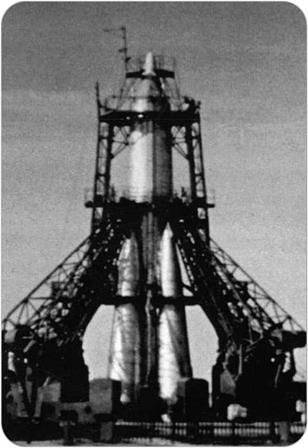Into Orbit
On October 4, 1957, the rocket carrying “Elementary Satellite 1,” or Sputnik 1, took off from the desert near Tyura-Tam, in what is now the Kazakh Republic. All went well, and the first radio signals from space told the waiting Soviet scientists that Sputnik 1 was in orbit. They announced their success to the world, and almost every newspaper, radio, and television network carried the story. Sputnik 1 was headline news. Astronomers trained radio telescopes on the tiny satellite. Amateur radio enthusiasts in many countries picked up the satellite’s “beep beep” radio signals as it passed overhead.
|
|
Sputnik 1 had a brief working life, but its historic flight proved that a human-made craft could survive launch and fly in orbit. The scientific data gathered from the flight was limited, but Sputnik 1 did help to identify the density of the layers in the upper atmosphere and provided useful information on how radio signals from space were received on Earth.
Scientists had feared that space dust or meteoroid impact might damage the spacecraft. Even a minute hole in the satellite would have caused a detectable drop in pressure and temperature. However, Sputnik 1 continued to orbit Earth undamaged. The spacecraft’s radio batteries ran out before the end of October, after which no more signals were received. The satellite stayed in orbit until January 1958, when it burned up as it reentered Earth’s atmosphere, having traveled about 37 million miles (60 million kilometers).











